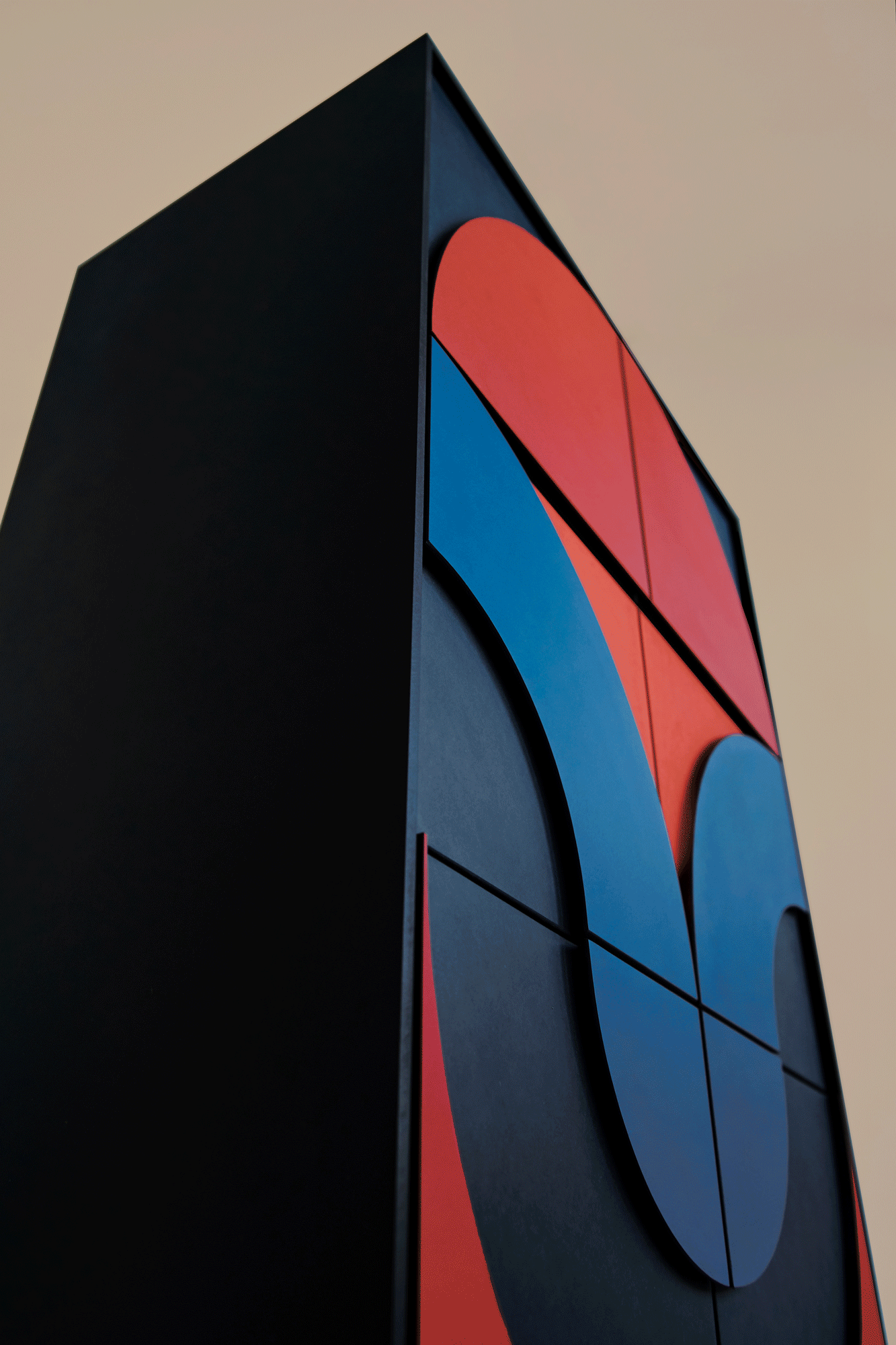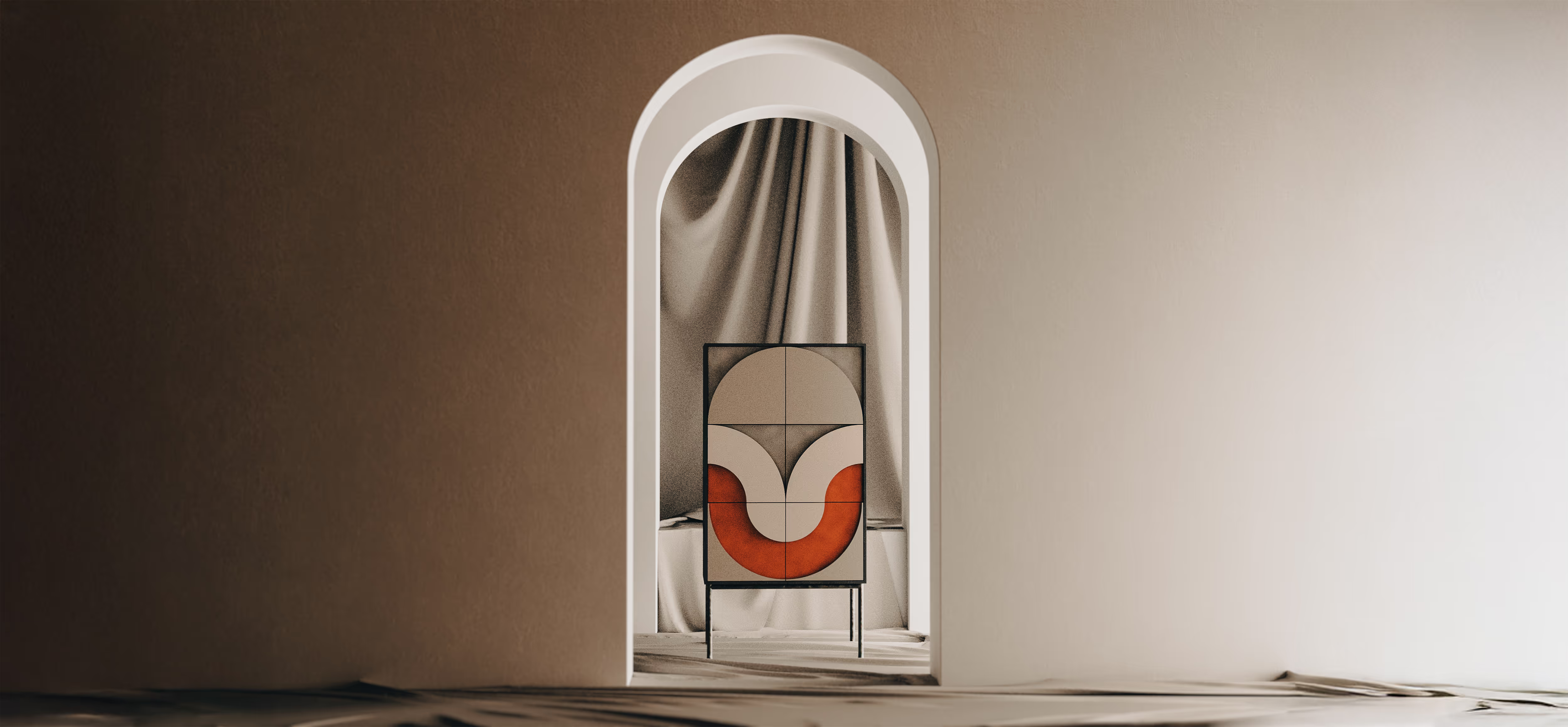



.avif)








.avif)




Part of the Burnt Geometry collection, the Vanishing Cabinet embodies a quest for "Hungarian design identity", tracing influences from the Bauhaus movement to Victor Vasarely, and culminating in Ferenc Lantos’s neo-avant-garde approach. Lantos famously arranged fragments of circles and squares into compositions that subtly echoed natural structures—an idea mirrored here by layered quarter-circles and squares. These layered shapes not only reference Lantos’s method but also nod to the tulip motif in Hungarian folklore, illustrating how simple structures of geometric elements can evoke organic imagery without the direct abstraction.
Each layer of the cabinet front doubles as a handle, lending sculptural depth to a functional surface. Meanwhile, the fire-patinated metal back recalls the kiln-fired enamel tradition that shaped Lantos’s practice, allowing the cabinet to stand freely and reveal its iridescent sheen from every angle. In keeping with our commitment to responsible design, the Vanishing Cabinet is crafted from locally sourced materials: valchromat boards finished with natural oils and a surface of furniture linoleum. By weaving together these historical and material influences, the Vanishing Cabinet underscores the continuity of Hungarian cultural heritage—an homage to the past, reimagined for the present.





.avif)








.avif)


